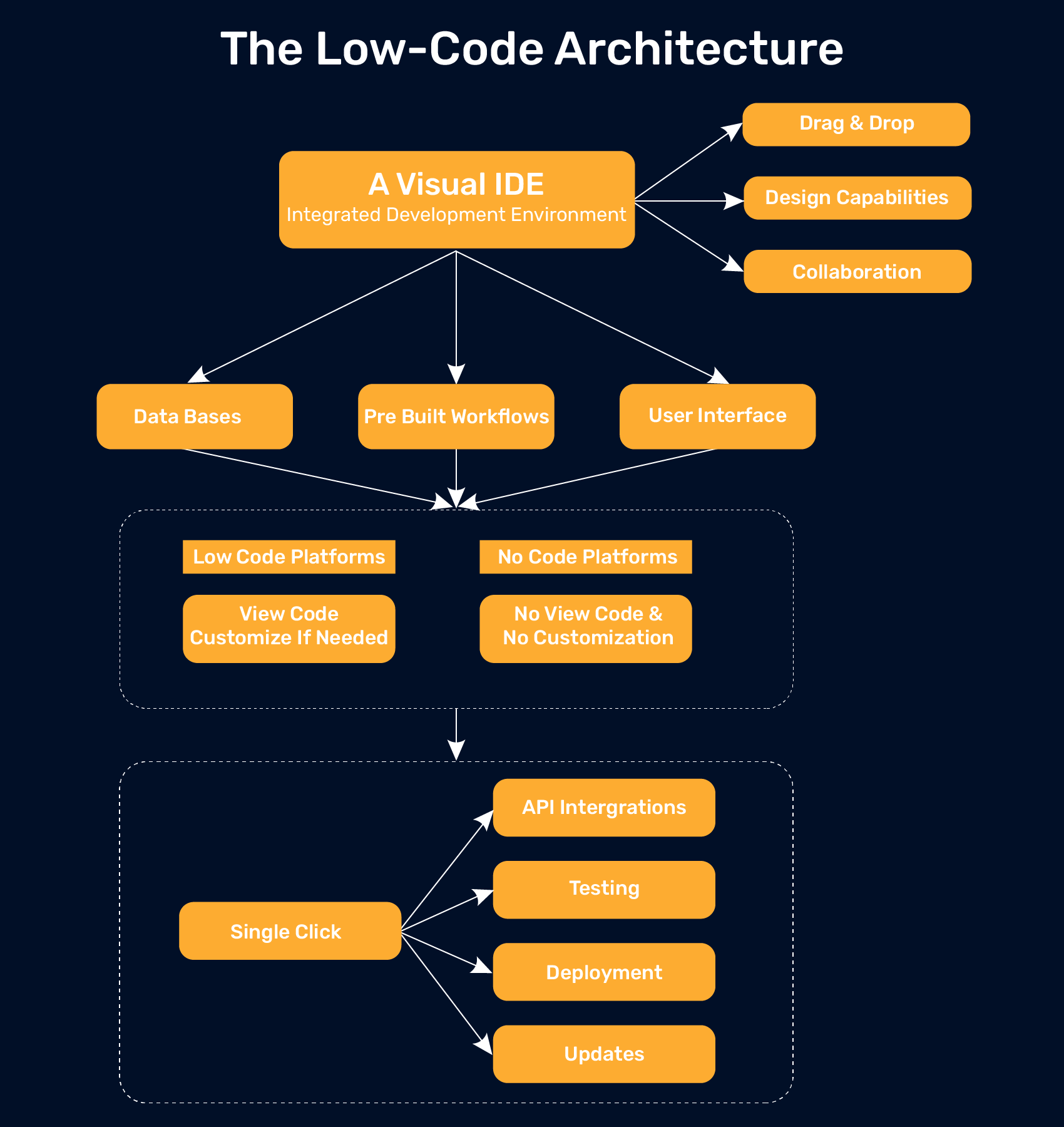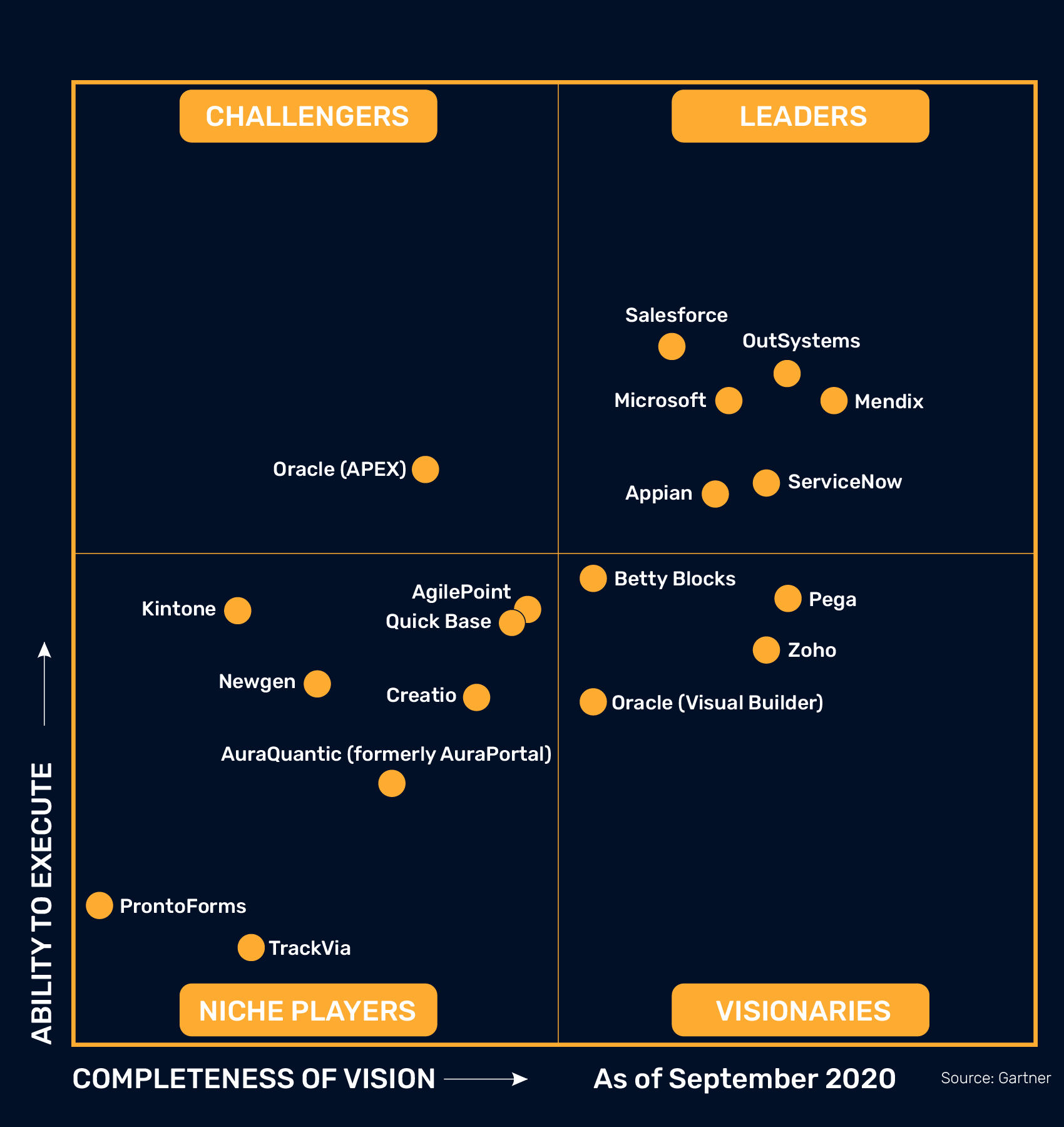What Are Low-Code Application Platforms and Why Are Businesses Worldwide Adopting Them?
By Yeshwanth Vadde

Rise of Citizen Developers
According to IDC, there will be a need to deploy over 500 million digital applications by 2023 – the same number of apps built in the last 50 years.
Businesses these days, irrespective of their industry or location, are going through some or the other form of digital transformation based on their specific need and digital maturity. In today’s world of accelerated turnaround times and results, most businesses and enterprises rely on many software products and applications.
Naturally, the demand for software developers has also skyrocketed. The US Bureau of Labor predicts that in the US alone, around 1.4 million IT jobs are set to be available by 2022. However, only 4,00,000 graduates are available to fill the roles.
This acute lack of skilled coders has led to the rise of “citizen developers”. Other factors which also heavily contributed to this are – overburdened IT departments, the need for businesses to cut costs, and technology innovations that result in lower dependency on human efforts to develop applications. Essentially, citizen developers are empowered business users who can use user-friendly platforms to create new or change existing business applications without involving IT departments.
These user-friendly platforms are low code platforms. Leveraging these, even the non-technical staff can create software applications using the GUI of these platforms with little or even no programming. Let’s take a deeper dive into the concept.
What is low-code application development?
Low-code is a highly visual approach to application development that allows users to modify and automate various phases of the SDLC based on the business needs.
- End-to-end Development: A low-code platform takes care of the entire development lifecycle from development to deployment of your application.
- Easy-to-customize Workflows: The low-code platforms come with in-built features, which can be drag-and-dropped into a visual workflow editor to create customized applications.
- Fast and Seamless Integrations: Low-code application platforms offer the ability to seamlessly integrate with any third-party application and customize them accordingly.

Benefits of Low-code Application Platforms
Choosing a low-code platform will depend entirely on your project and needs. Here are some of the top benefits of a low-code platform.
Simplicity
High ROI
Speed
Challenges of Low-code Development
With every benefit, there comes a challenge. The same goes with low-code platforms too. Here are some challenges of using low-code platforms.
- Expertise Requirements – Though low code platforms are designed to facilitate non-experts/business users, sometimes it still requires a level of development knowledge, at least to understand the pre-written code while building every aspect of an application.
- Limited Integrations – Low code can be integrated with a vast expanse of systems. However, it is not compatible with more complex software which utilizes external databases or multiple backends.
- Security Vulnerabilities – Low-code offers full control to neither the source code nor the data. It makes it impossible to determine the potential vulnerabilities in your apps. As a result, organizations may stick with traditional coding for sensitive applications until further security innovations are made in this direction.
According to a study conducted by Gartner, the Low-code market is projected to reach over $13 billion by the end of 2021; and by 2023, over 50% of medium to large enterprises will adopt an LCAP as one of their strategic application platforms.
How is Low-code different from no-code?
Both have the same goal – enabling users with little to no knowledge of coding to build and customize applications based on their business needs.
By stripping away the operating costs associated with setting up environments and infrastructure maintenance, both low and no-code development platforms help pro and amateur developers improve productivity. Instead of requiring a developer to know traditional programming languages, they both provide a visual approach to application development. However, that’s pretty much where the similarities end.
What is No-Code?
In simplest terms, no-code is also an application development platform that literally requires no coding knowledge to build a basic app. These platforms are enabled with visual editors containing drag-and-drop-based tools, using which one can build both web and mobile apps. The interface of a no-code platform is straightforward and extremely user-friendly; however, these apps have a limited scope for customization. This is because much of the framework of these no-code platforms are fixed by the developers who made them.Who Can Use the No-Code Platforms?
With limited capabilities to creating personalized apps, no-code platforms are still in use by many businesses. Who is using them?- Large Enterprises: where the IT teams don’t have the capacity to create applications at scale for their fast-growing needs.
- Non-coders: to create a prototype of the idea before handing it over to the IT team to develop.
- Startups: which can’t afford to bring in skilled developers.
Differences Between Low-code and No-code
| Low-code App Platforms | No-code App Platforms |
|---|---|
| For developing mobile and web apps that require integration with other data sources. | Useful only for creating front-end use cases |
| Can be used by both professional developers and citizen developers | Designed, especially for citizen developers |
| Requires some coding knowledge | Users with no programming knowledge can use them |
| Allows app customization | Only the prebuilt templates can be customized |
| Helpful for building complex applications | Can be used to create simple apps for business needs |

Top 5 low code application platforms for business developers
Let’s explore some of the best low-code platforms that can be the right fit for your business.
Features:
- Helps you connect and integrate with 220+ data sources not only across Microsoft but also other third-party systems.
- Prebuilt templates, simple drag and drop functionalities, prebuilt AI components help you create interactive web and mobile apps.
- Allows you to customize both Office 365 and Dynamics 365.
2. Zoho Creator
This is one of the secure low-code application platforms, which allows you to build multi-platform apps, ranging from something as small as a call log to high-end ERPs.
Features:
- Helps you easily automate workflows using visual builders and code editors.
- You can also migrate the data by just importing your Google or excel sheet.
- Has prebuilt connectors to seamlessly integrate both old and new systems.
3. Mendix
Mendix is yet another powerful low-code development platform helping you build impact-driven applications that have a high chance of becoming successful in no time.
Features:
- Comes with an all-in-one interface helping you create applications suiting the majority of the industries like digital insurance solutions, AI smart banking and face recognition, logistics tracking, and many more.
- Has cognitive and AI abilities to make your apps smarter and easier to use.
4. Outsystems
Outsystems helps you build cloud-based apps that can rapidly evolve with your business needs.
Features:
- You can create innovative web and mobile apps incredibly fast using Cloud, AI, and DevOps.
- Offers automation services and has integrated tools to produce resilient, scalable apps.
- Features drag and drop UI, cross-platform apps, and a handful of data models for full-stack creation.
5. Appian
Appian offers an intelligent application platform to help build apps that generate customer engagement whilst ensuring security to all the apps you create using the UI.
Features:
- Offers integration to any AI/ML platforms through Amazon AWS and Microsoft Azure.
- You can also integrate web services, enterprise data, and systems without the need for coding.
Read more about how Gartner classifies them here.
Conclusion
Although low-code may not be a solution to all the challenges that traditional programming poses, but it is proving to be a formidable source of innovation.
The low code application platforms will continue to evolve and expand their integration ecosystems. Going forward, we can also expect some useful additions and upgrades to these platforms, which can have a deep impact on the software development space.
Until then, it can be assumed that the pace, agility, and accessibility of these low-code applications will be transformative for startups and large enterprises struggling with a lack of skilled development resources.
“
Smart low-code platforms make the development lifecycle more seamless and enable developers to easily prototype and iterate. Low-code focuses on making app development simpler and quicker.
Dick Wooden




